General & Preventative Dentistry
General dentistry is as much about prevention as it is about treatment – the aim is to maintain oral health by avoiding problems before they occur. Our general and preventative dental services provide you with professional oral health care, education and tailored self-care advice for between visits.
Restorative dentistry is essentially a catch-all phrase describing the art of restoring damaged teeth, using techniques like fillings, crowns, inlays/onlays and bridges.
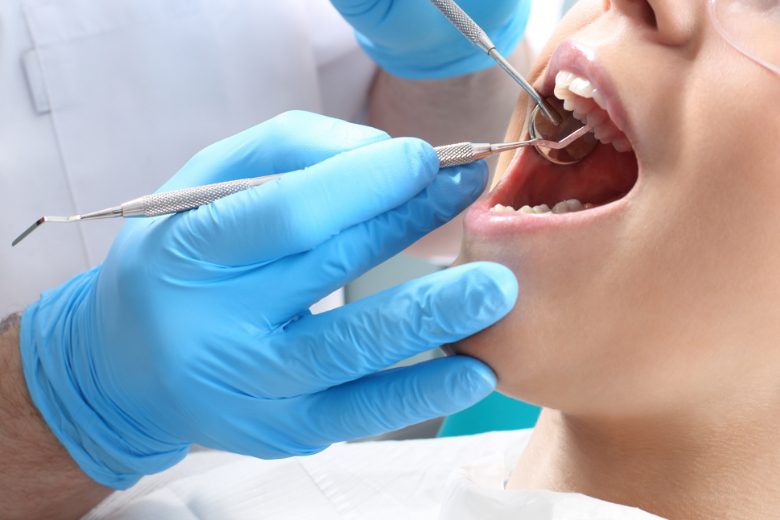

How often should you see your dentist?
Check-Ups
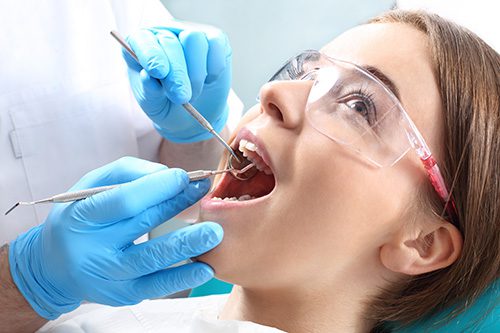

After reviewing your medical and dental history, a routine dental check-up will include:
Jaw Joint Examination
For mobility and function
Oral Cancer Screening
Examining the neck, face, lips, tongue, throat, tissues and gums for any signs of oral lesions or abnormalities. Early detection can, in some cases, be life-saving.
Gum Disease Examination
Examining and recording the condition of the gums and bone around the teeth.
Dental caries (tooth decay) and damage
Examination of all tooth surfaces
Dental prostheses
Assessment of splints and dentures, when taken to the examination appointment.
Diagnostic X-rays (when needed)
X-rays are essential for early detection of decay, tumours, cysts, bone loss and many other radiographically diagnosed diseases.
Scale & Clean
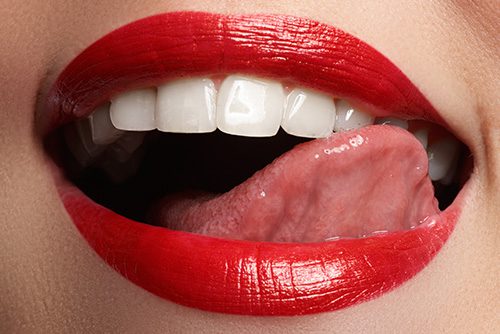

Plaque is a sticky, almost invisible film that forms on the teeth. It is a growing colony of living bacteria, food debris, and saliva. The bacteria produce toxins which attach to the teeth and inflame the gums and acids which decay the tooth. The inflammation can be the start of periodontal disease which has even been linked with heart disease and premature birth.
Calculus, or tartar is hardened plaque that has been left on the tooth for some time and has become firmly attached to the tooth surface. Calculus forms above and below the gum line and can only be removed with special dental instruments.
If removing plaque and calculus from your teeth isn’t enough to motivate you to get a scale & clean, just think about that “dentist clean” feeling you’ll be left with afterwards.
Mouthguards


Dental mouth guards have long been used to protect the teeth, gums and supporting tissues from damage, injury and trauma by dissipating impact forces to eliminate costly and traumatic dental injuries.
There are three types of sports mouth guards – preformed stock mouthguards, mouth-formed (boil and bite) and custom-made. While over the counter mouthguards are helpful for occasional use, many dental patients require the benefit of a customised dental mouth guard fitted by a dentist to effectively prevent injury.
Custom dental mouth guards are designed for durability and comfort during activities, but the accurate fit ensures effectiveness. Mouth guards for children and teens must be replaced frequently to account for growing jaws and changes to the teeth.
Sedation
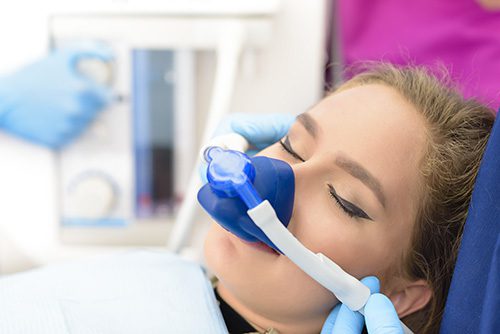

Does visiting the dentist bring you significant anxiety or even fear? Does it prevent you from having regular check ups? Do you wish that you could feel relaxed, safe, and comfortable every time you visit the dentist, or better still – completely asleep during your procedure? If you answered yes to any of these questions, sedation dentistry could be the answer for you.
Sedation is typically administered to healthy individuals who need help relaxing or managing the anxiety brought on by visiting the dentist. Sedation can be administered in one of the following ways:
Oral Sedation
This is the basic level of sedation we administer, usually for patients who are anxious about having dental treatment. It is relatively simple and involves taking a prescribed medication prior to starting your procedure. This helps alleviate mild anxiety and helps patients to relax.
Inhalation Sedation
Also known as laughing gas, most patients who have had nitrous oxide sedation often compare it to feeling like they are floating or to having had a few glasses of wine. A small hood is placed over the patient’s nose, and the flow level is adjusted by the dentist until the patient is comfortable. One advantage of this method is that as soon as the dental work is complete, the patient receives 100% oxygen and the feeling of sedation is gone within a few minutes.
Intravenous Sedation (‘Sleep Dentistry’)
Also known as twilight anaesthetic, this is a deeper sedation reserved for patients who want little or no memory of their dental visits. This type of sedation is ideal for patients with extreme anxiety when it comes to dental procedures. Under the care of a trained anaesthetist or professional, a sedative will be administered to you intravenously and you will be carefully monitored throughout your procedure.
Because sedation covers a spectrum of treatments, you will need to consult with one of our dentists to discuss what level of sedation best meets your needs. Your eligibility for sedation will depend on your age, health, and any other medications you may be taking. Depending on the type of sedation you undergo, a licensed driver may need to drive you home from your dental appointment. If you undergo IV sedation, you may need to be supervised for several hours following the procedure.
Extraction
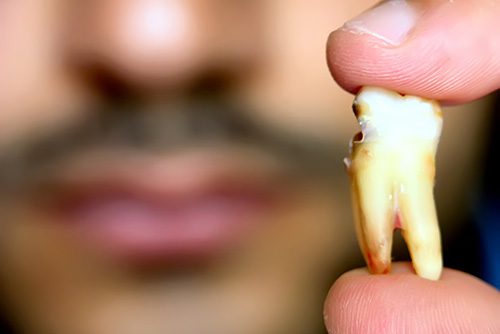

Tooth extractions are routine dental procedures performed to remove decayed, damaged or otherwise problematic teeth. Dentists usually make every effort to preserve natural teeth, however, sometimes an extraction is necessary. Depending on which particular teeth are removed, they may be replaced with a dental implant or another dental prosthetic – sometimes both procedures can be performed on the same day.
The most common cause of tooth extraction is severe untreated tooth decay (cavities). However, many patients also undergo extractions for impacted teeth (common with wisdom teeth). Other causes for extraction include advanced periodontal (gum) disease and cracked teeth. Although some circumstances that require extraction are unavoidable, many can be prevented with regular visits to the dentist and appropriate early intervention.
Dentures
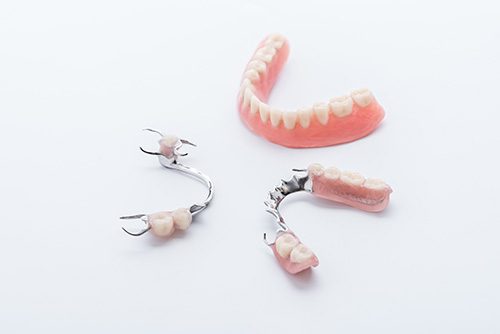

Dentures are removable tooth prosthetics designed to look and function like natural teeth. Most dentures are composed of acrylic replacement teeth attached to acrylic bases that take on the appearance of the gums. Dentures are used to compensate for one or more missing teeth, and are available as partial or complete sets of teeth.
Partial dentures rest on surrounding teeth and gums to fill in the gaps where one or more teeth are missing. Unlike a bridge, partial dentures are fully removable by the wearer. Partial dentures are affordable alternatives to other types of dental prosthetics and are custom-made to blend in with each patient’s natural teeth. It takes a little time to adapt to new dentures, but many people find that they reclaim much of their original dental function, aesthetic and speech.
If you are missing one or more teeth and think dentures may be the solution, a professional consultation with a dentist will give you the information you need to decide on the right form of treatment.
Bridges


If you are missing a tooth (or teeth), a bridge can be an option for replacing it, filling the space where a tooth once was.
As shown here, a typical bridge consists of a pontic (the missing tooth) that is attached to one or more surrounding crowns (abutments). Once constructed this bridge structure is bonded into the mouth. Without the use of a bridge, gaps in the mouth where natural teeth are missing can cause multiple teeth to shift, lead to bite interferences or jaw problems, and hasten periodontal disease. Beyond aesthetic enhancement, bridges safeguard the integrity of existing teeth and help maintain a functional, healthy and vibrant smile.
Crowns


If a tooth is extensively damaged, your dentist may suggest protecting it by covering it with a crown – also known as a cap. The materials used to construct crowns vary depending on individual circumstance and preference. Crowns protect damaged teeth by improving the distribution of stress to the tooth, making the tooth strong and longer-lasting, particularly where there is a risk of a the tooth breaking or cracking. Crowns can also be used to improve cosmetic appearance.
Fillings
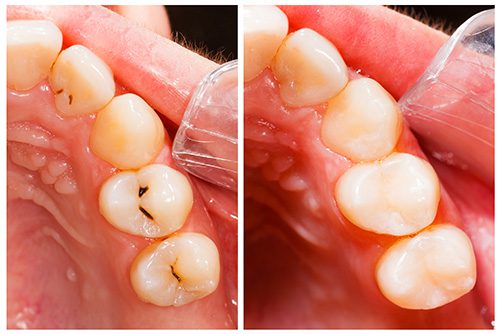

Dentist perform fillings to fill in decayed areas of the teeth, as well as repairing chipped or broken teeth. Several materials can be used for fillings, however the two most commonly used materials today are amalgam and composite resin.
Amalgam fillings are very strong and long-lasting and can withstand heavy biting forces. Amalgam fillings are less expensive but its dark colour doesn’t appeal to all patients.
Composite fillings (also known as tooth-coloured fillings) are dental restorations designed to be inconspicuous and natural in appearance. They blend well with the teeth and appear more natural than amalgam fillings.
Porcelain Veneers


Dental veneers – also known as laminates – are used to cosmetically enhance the appearance of one or more teeth. Veneers are very thin porcelain or resin shells, bonded to the surface of the teeth. Customised for a desirable colour and shape, they can help you if you have gaps between your teeth or teeth that are broken, chipped, irregularly shaped or misaligned. Veneers also provide a solution for discoloured teeth that do not respond to traditional whitening treatments.
Patients with veneers typically achieve a natural tooth appearance that is well-tolerated by the gums and resistant to future stains. To find out more about whether dental veneers are right for you, contact us to schedule a consultation.
Dental Implants
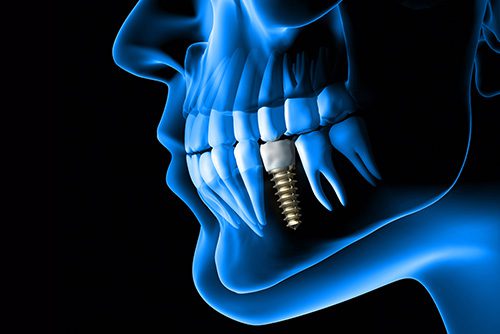

Dental implants are typically used for people who have either lost teeth, or are going to need teeth extracted. This treatment provides an artificial tooth root in the form of a titanium screw which is embedded in the jaw bone. The replacement tooth structure is then mounted onto this screw.
Many dentists and patients prefer dental implants because they offer the same function as natural teeth and also help prevent bone loss in the jaw. Dental implants may be used to replace a single missing or damaged tooth or to restore an entire smile and offer a strong and quite predictable long term result.
The placement of dental implants is a multi-step process that typically takes between 3-6 months to complete. It begins with a surgical procedure during which a titanium screw is carefully placed where a previous natural tooth root once was. At the conclusion of the healing period, when the bone has fused with the screw and is strong enough, the permanent crown or prosthesis is placed.
Dental Sealants
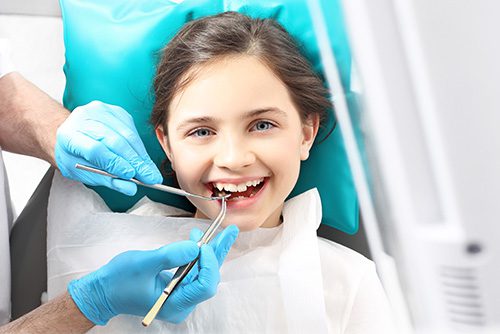

Dental Sealants are very thin coatings used to fill in deep grooves and pits of teeth where bacteria can easily grow. Sealants are applied to healthy chewing surfaces and deep grooves of the teeth to prevent decay and cavities – especially among children. By applying sealants, decay can be prevented which can save on the costs associated with filling cavities when they occur.
This treatment may be right for your child if they have molar teeth that are healthy and free of decay but are susceptible. Schedule a dental consultation for a complete oral examination to find out if dental sealants could be a suitable preventative health solution for your child.
Inlays / Onlays
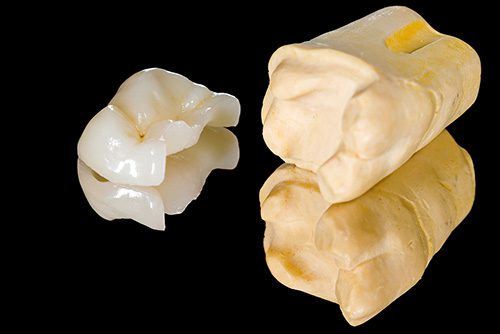

Inlays and onlays are dental restorations that are more extensive than dental fillings, but less so than crowns.
They are typically formed in a dental laboratory and are made of gold, porcelain, resin or other alternatives depending on the patient’s needs and aesthetic goals. An inlay refers to a restoration that is formed to fit the center of a tooth. An onlay refers to a restoration that encompasses at least one cusp of the tooth. Both inlays and onlays are bonded to the surface of the damaged teeth.
Splints & Retainers
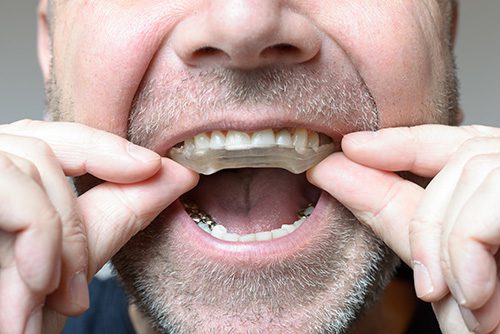

Splints are custom-made appliances for patients to wear at night when clenching or grinding is causing (often irreversible) tooth damage. Tooth grinding places a lot of pressure on your teeth, possibly cracking their protective enamel, causing fractures and breaking crowns and fillings in your mouth. It also places great stress on your jaws joints and muscles.
Most people aren’t even aware they are grinding their teeth until their partners tell them or advanced symptoms such as jaw pain, headaches and worn down, sensitive teeth start to emerge. You might also find your teeth are more sensitive to temperature fluctuations, and more painful to bite down on as the fibre that attaches the teeth to the bone gets bruised. It is preferable to wear down a splint, instead of your own tooth enamel. A splint also reduces the stress on your jaw muscles which contribute to the problems. Muscle relaxants have also been shown to reduce excessive jaw muscle activity.
Gum Disease Treatment
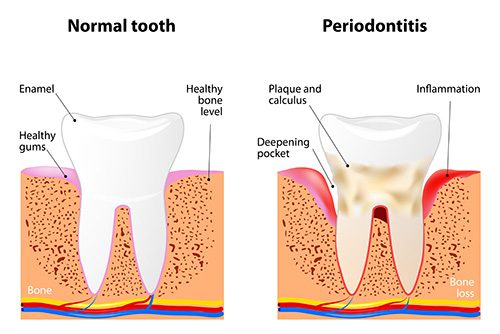

Just like the cement foundations of a building or house, your gums form the foundation of your dental health. Gum diseases including periodontitis and gum recession are serious oral health issues, and the most common cause of tooth loss. Symptoms for gum disease include bad breath or painful gums or abscesses, but are often present without any obvious symptoms whatsoever.
An accumulation of bacteria along or under the gum line may manifest as gingivitis (quite common during pregnancy). Of more concern, it may lead to periodontal disease – where loss of the bone which holds the teeth occurs and can result in tooth mobility and ultimately tooth loss. Found in its earliest stages, periodontal disease is more easily treated. If left untreated, periodontal disease is likely to progress, requiring more invasive treatments and potentially risking total tooth loss. Periodontal disease has also been linked to heart disease and diabetes.
Low Radiation Digital Xrays (when required):
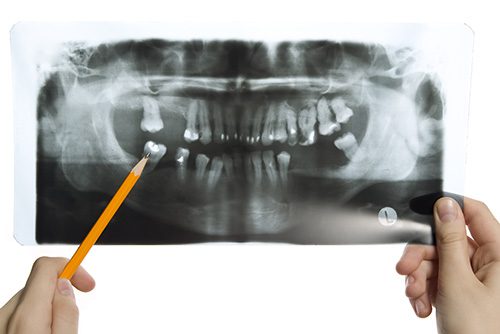

X-rays are essential for detection of decay, tumours, cysts, bone loss and many other radiographically diagnosed diseases. We have lower dosage digital x-ray systems for sharper images with less x-ray exposure, ensuring the safety of our patients.
Root Canal Treatment
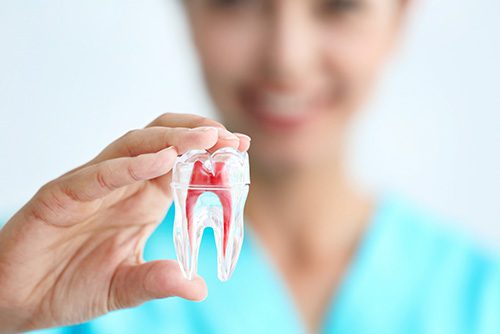

The pulp (or nerve) is the live portion inside the tooth that contains nerve endings and tissues. When decay or damage has allowed bacteria to infect the pulp, patients can experience pain, swelling and even total tooth loss if left untreated. Root canal treatment involves removing the damaged and infected internal parts of the tooth, allowing you to save the tooth. In some cases, an antibiotic is prescribed to help prevent further infection spreading. The portion of the tooth that remains may need to be restored using a crown (cap) that provides a natural appearance, strength and normal tooth function.
For more information about root canal treatment and whether it applies to you, schedule a dental exam and consultation at your earliest convenience.
Wisdom Teeth Removal
& Oral Surgery
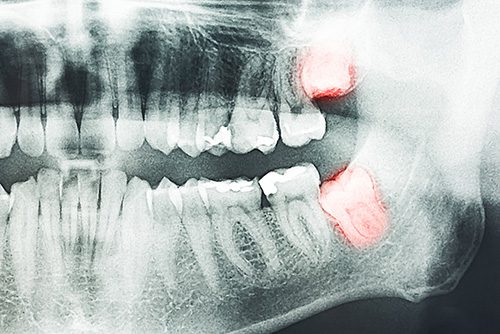

The wisdom teeth are the final four teeth to erupt from the gums – usually sometime between age 17 and 25. Ideally, they emerge and remain without complication. However, in some cases they cause overcrowding or grow at an angle that can later be problematic, making it difficult to clean and leading to dental diseases. Removal of problematic wisdom teeth can prevent infection, crowding and other complications. You may need your wisdom teeth removed if you have one or more impacted wisdom teeth or if you are having difficulty adequately cleaning those that have emerged.
Dentists recommended that all young adults have their wisdom teeth evaluated. A consultation and x-ray can reveal impaction, damage to neighbouring teeth, signs of decay, gum disease, or possible complications with future wisdom tooth eruption.
